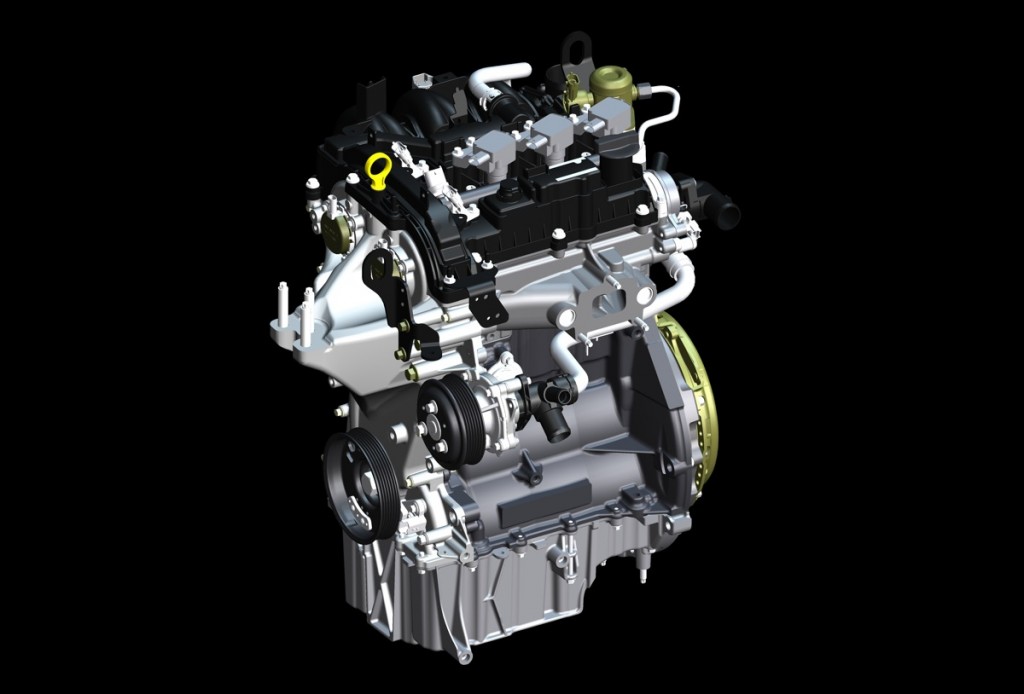There was a time, not so long ago, when car owners were expected to carry out basic maintenance and regular servicing on their car using a handful of wrenches and common automotive tools.
Nowadays, most of the maintenance is carried out by professional garage mechanics and dealers. but there are some things -- like checking the tire pressure, condition and washer fluid -- that the driver is still expected to do regularly.
Checking your car’s engine oil is also on the list, but do you know how to do it?
According to a recent study by ExxonMobil, a shocking 50 percent of drivers in the U.K. don’t know why engine oil is needed, while 75 percent don’t know HOW to check their oil.
Why you need it

Ford's 1.0-liter EcoBoost engine. Image: Ford Motor Company
Inside an engine, oil is used to provide lubrication to its many moving parts, some of which are engineered with tolerances of thousandths of an inch.
Without the lubrication that oil provides, these parts rub against one another rather than glide, generating heat from the added friction that a lack of oil creates.
There’s more. Because extra energy is needed to overcome the effects of friction, the engine will become less efficient, pushing your gas bill up.
If there’s no engine oil at all in your engine, it risks overheating and seizing completely, rendering your car a heavy paperweight and you with a very large repair bill.
Too much is also bad
Unfortunately, overfilling your car’s engine with oil can also do severe damage to your car.
Overfill your oil, and too much oil can get into the car’s combustion chamber, contaminating the air/fuel mixture there, reducing the efficiency of the engine, and damaging air, fuel and ignition systems in the process.
Breakdown
Tips to check
Hopefully, you already know where and how to check you car’s engine oil level. If not, here’s a gentle reminder of what to do.
- Look in the owners’ manual for your car. Not only will it help you locate the dipstick, but it will list the correct engine oil for your car. It’s important that you use the correct grade and specification engine oil in your car, as too heavy or too light an oil can also cause damage.
- Park your car on flat, level ground, and wait until the engine is completely cool before checking oil levels. You cannot get an accurate reading when the engine is hot, or the car is parked on a slant.
- Grab an old rag or paper towel, and pull the dipstick out of the engine. Wipe it clean.
- Once clean, replace the dipstick fully, pull it out once again, and hold it horizontally.
- You’ll see a minimum and maximum mark or a crosshatched area on your dipstick nearest to the end that sits lowest in your engine. Make a note of where the oil is on that stick.
- If the oil is below the full mark, you’ll need to add the correct grade oil by unscrewing the oil filler cap and pouring it into the engine. Pour a little at a time, repeating the third to fifth steps above until the dipstick reads full.
- If your engine is in good condition and well-maintained, it shouldn’t need engine oil top-ups very regularly. If you notice that the oil is dark in color, smells particularly strongly or your car loses a lot of oil, you should book your car into a local, reputable garage for a thorough inspection.
- It's worth noting too that it isn't required or necessary to change your oil and filter every 3,000 miles as it once was. Thanks to modern synthetic oils and engine designs, doing so is a waste of time, money and resources. In fact, the California Air Resources Board now advises owners not to change oil until they need to as specified in their owners' manual.
When did you last check?
Ideally, engine oil checks should be made once every few weeks, or, if you use your car regularly, every week.
But when did you last check your engine oil? And do you know how to?
Let us know in the Comments below.
+++++++++++













